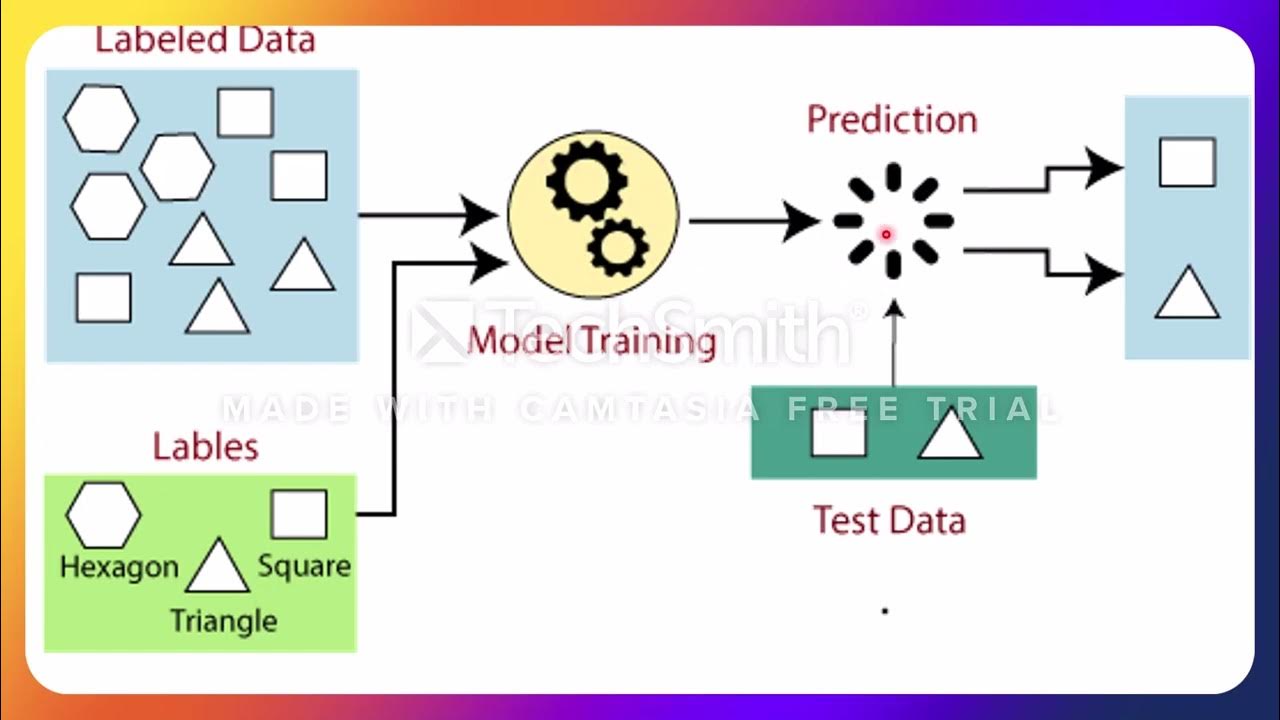[Easy! 딥러닝] 1-3강. 자기 지도 학습 (Self-Supervised Learning) | 딱 10분만 투자해보세요!
Summary
TLDRThis video explains the concept of self-supervised learning, a technique in machine learning that allows models to learn without needing labeled data. The speaker elaborates on two key methods: Contrastive Learning, which focuses on teaching models to distinguish similar and dissimilar images, and Pretext Tasks, where fake problems are created to train models in the absence of labeled data. Examples like image patches and models such as GPT are discussed to illustrate how self-supervised learning can be applied to various tasks, improving performance with less reliance on expensive labeled data. The video also touches on transfer learning and how pre-trained models can solve new tasks effectively.
Takeaways
- 😀 Contrastive Learning involves training a model to produce similar outputs for images from the same source, and dissimilar outputs for images from different sources.
- 😀 Self-supervised learning (SSL) allows for the training of models without labeled data by generating 'fake' problems to solve, which helps the model learn more effectively.
- 😀 In SSL, an example includes creating random patches from images and training the model to predict relative positions of those patches to enhance image recognition.
- 😀 One of the key advantages of SSL is that it enables training on vast amounts of unlabeled data, which would otherwise be discarded in supervised learning.
- 😀 By first solving self-created problems and then using labeled data for fine-tuning, SSL models outperform models trained only with limited labeled data.
- 😀 Self-supervised learning can be seen as creating practice problems for the model to solve, much like a student creating their own practice tests to prepare for exams.
- 😀 In SSL, the model generates its own labels (e.g., by predicting relative positions of patches) and learns to map images to specific outputs.
- 😀 Pretraining and downstream tasks are key stages in SSL. Pretraining involves solving 'fake' problems, while downstream tasks use labeled data to solve real-world problems.
- 😀 Transfer learning in SSL is when a pre-trained model is adapted to solve a new problem, often by slightly adjusting the model’s architecture for specific tasks.
- 😀 Contrastive learning, a type of self-supervised learning, ensures similar representations for similar images and distinct representations for different images, enhancing feature learning.
Q & A
What is contrastive learning?
-Contrastive learning is a technique in self-supervised learning where the model is trained to distinguish between similar and dissimilar data. Specifically, it involves making similar examples (from the same source) closer in the feature space and dissimilar examples (from different sources) farther apart.
How does self-supervised learning work?
-Self-supervised learning involves generating pseudo-labels for data and training the model on these self-created tasks, rather than using pre-labeled data. This allows the model to learn useful representations even when labeled data is scarce or unavailable.
What is a 'pretext task' in self-supervised learning?
-A pretext task is a pseudo-task created to train a model in self-supervised learning. This task is designed to help the model learn useful features by solving an artificial problem, which can later aid in solving the actual problem when labeled data becomes available.
How does contrastive learning compare to traditional supervised learning?
-In contrastive learning, the model does not require labeled data but instead learns by contrasting similar and dissimilar examples. In traditional supervised learning, the model is trained on labeled data, with explicit input-output pairs provided.
What is the importance of the 'relative position of patches' in self-supervised learning?
-In self-supervised learning, the relative positions of patches within an image help the model understand the spatial and contextual relationships between different parts of an image, which improves its ability to recognize objects and their components.
What role do 'fake' tasks play in self-supervised learning?
-Fake tasks (or pretext tasks) help the model learn useful representations by solving artificial problems, such as predicting the relative position of patches within an image. These tasks do not directly solve the final task but prepare the model to perform better on actual tasks with labeled data.
What is the benefit of pretraining a model with a self-supervised learning approach?
-Pretraining a model with self-supervised learning allows it to learn useful representations without requiring large amounts of labeled data. This pretraining helps the model perform better when fine-tuned with a small amount of labeled data for specific tasks.
What does 'transfer learning' refer to in the context of self-supervised learning?
-Transfer learning in self-supervised learning refers to the process of taking a model that has been pretrained on a large amount of unlabeled data and fine-tuning it on a smaller set of labeled data to perform a specific task, such as classification.
Why are self-supervised learning methods like contrastive learning powerful?
-Self-supervised methods like contrastive learning are powerful because they allow models to learn from vast amounts of unlabeled data and create strong feature representations. This reduces the need for expensive labeled data while still achieving high performance on downstream tasks.
How does GPT (Generative Pretrained Transformer) use self-supervised learning?
-GPT uses self-supervised learning through next-token prediction, where the model predicts the next word in a sequence given the previous words. This method helps the model understand language patterns and context without the need for labeled data, enabling it to generate coherent and contextually appropriate text.
Outlines

此内容仅限付费用户访问。 请升级后访问。
立即升级Mindmap

此内容仅限付费用户访问。 请升级后访问。
立即升级Keywords

此内容仅限付费用户访问。 请升级后访问。
立即升级Highlights

此内容仅限付费用户访问。 请升级后访问。
立即升级Transcripts

此内容仅限付费用户访问。 请升级后访问。
立即升级浏览更多相关视频

1.2. Supervised vs Unsupervised vs Reinforcement Learning | Types of Machine Learning

L8 Part 02 Jenis Jenis Learning

Scikit-Learn 1: Qu'est-ce-que l'apprentissage automatique?

The Fundamentals of Machine Learning

Supervised Learning | Unsupervised Learning | Machine Learning Tutorial | 2023 | Simplilearn

#6 Machine Learning Specialization [Course 1, Week 1, Lesson 2]
5.0 / 5 (0 votes)
